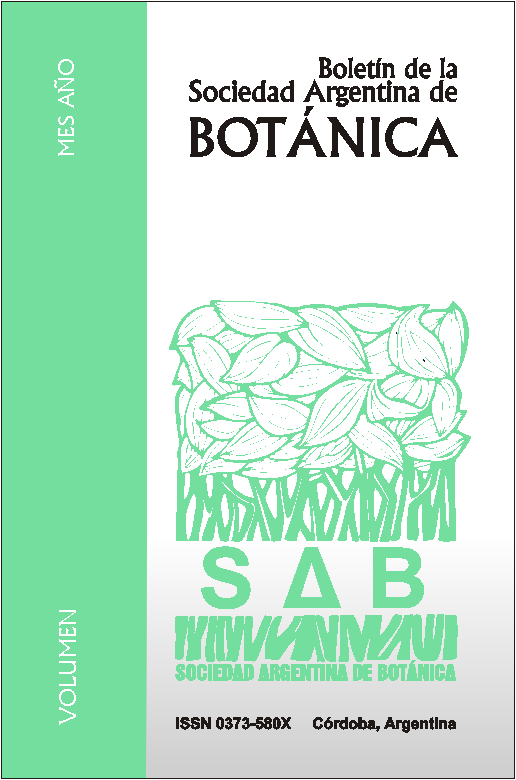Cyanobacteria in a subtropical reservoir of the province of Salta (Argentina).
DOI:
https://doi.org/10.31055/1851.2372.v53.n4.21977Keywords:
Limón, environmental risk, phytoplankton, algae, potabilization water.Abstract
The Limón reservoir has become the main source of drinking water for 80% of the population of the north of the province of Salta (22 ° 05'47.90''S-63 ° 44 '19.48' 'W). At present, there is no systematized information on phytoplankton algae present in this dam. We analyzed 19 samples from the period 2013-2015, in both phases of the hydrological cycle, according to standardized techniques, in order to evaluate the representativeness of potentially toxic Cyanobacteria in Limón and their relative importance in phytoplankton. There was a predominance of Cyanobacteria, with a significant interannual increase, these being more abundant during dry season, with an average of 110,160 cells/ml in 2015, with a predominance of Cylindrospermopsis raciborskii and Raphidiopsis mediterranea (75,027 and 170,000 cells/ml repectively). Among the species with toxic potential,Anabaenopsis elenkinii, Aphanizomenon gracile, Aphanocapsa annulata, Coelomoron tropicale, Chroococcus dispersus, C. raciborskii, Microcysis flos-aquae, Planktolyngbia limnetica, Pseudanabaena limnetica, R. mediterranea and R. curvata were notable for their densities. The representativeness of this group within the phytoplankton was greater than 70%. It is concluded that the body of water is an environment of risk and must be monitored permanently for its use for water for human consumption.Downloads
Published
Issue
Section
License
Provides immediate and free OPEN ACCESS to its content under the principle of making research freely available to the public, which fosters a greater exchange of global knowledge, allowing authors to maintain their copyright without restrictions.
Material published in Bol. Soc. Argent. Bot. is distributed under a Creative Commons Attribution-NonCommercial-ShareAlike 4.0 International license.





